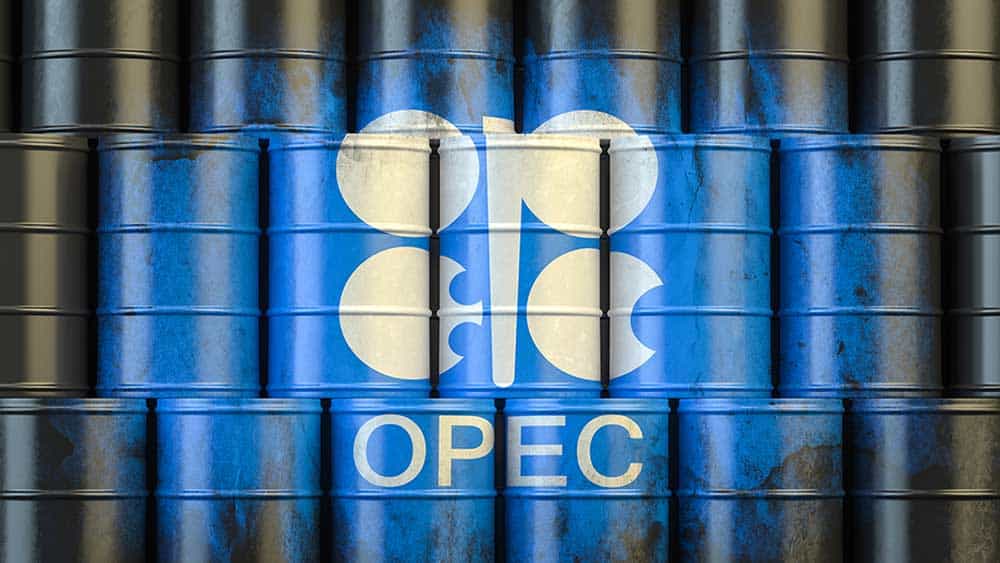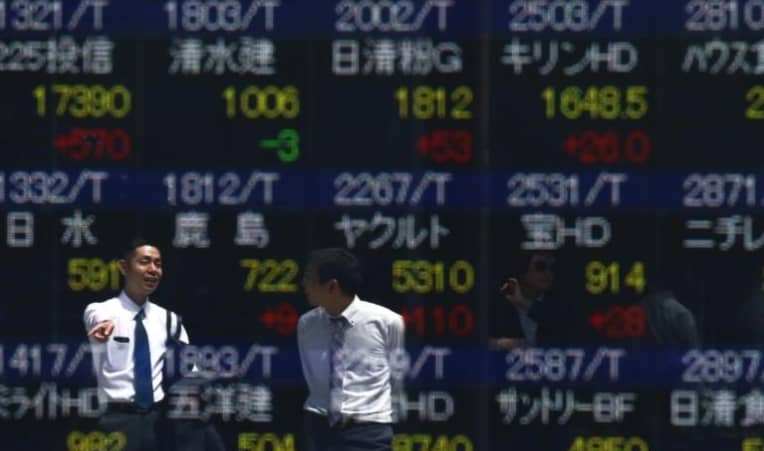
The Organization of the Petroleum Exporting Countries and key partners will extend most of the current output cuts, sending oil prices soaring Thursday.
Most OPEC+ members will continue current production quotas in April, including Saudi Arabia’s earlier decision to curb 1 million barrels per day of its own output. Russia and Kazakhstan have exceptions and can increase production by 130,000 bpd and 20,000 bpd, respectively, “due to continued seasonal consumption patterns.”
“The Saudi decision to extend their voluntary 1 million bpd cut was shocking as it leaves them vulnerable to losing market share next month when the oil market is in deficit by a couple million barrels,” Edward Moya, a market analyst at Oanda, wrote in a note. “This outcome was not expected and pretty much guarantees a tight market up through the summer.”
Market analysts were originally expecting the group to approve a 1.5 million bpd increase in production, with Saudi Arabia ending its extra 1 million bpd cut.
But Saudi Arabia could start to bring production back gradually in May. OPEC+ will meet again on April 1.
Oil prices soared on the news. Brent futures jumped 4.2% to settle at $66.74 a barrel per barrel, the highest since Feb. 25. U.S. crude oil prices jumped 4.2% to settle at $63.83 a barrel, the highest since April 2019.
Oil Prices Lift Energy Stocks
Exxon Mobil (XOM) shares close up 3.9% on the stock market today, giving up earlier gains. Chevron (CVX) rose 0.9%, and EOG Resources (EOG) rallied 6.6%.
Saudi Arabia has urged OPEC+ not to get ahead of itself in the last several meetings, even as good news emerges on the pandemic front.
Energy Minister Prince Abdulaziz bin Salman said, “there is no doubt that the global oil market has improved since we last met in January,” in his remarks to open the OPEC meeting. The group has been called OPEC+ in recent years with the addition of Russia and top producers.
But he also warned that the group needs to display “caution and vigilance.”
At the December OPEC+ meeting, Prince Abdulaziz said that the Covid vaccines add hope but also uncertainty to oil markets because “it is a bit of an unknown” on how many people will take the vaccine.
An increase in demand and oil prices depend on Covid-19 vaccine rates. Vaccines are rolling out at a faster clip and the U.S. approved the Johnson & Johnson (JNJ) shot over the weekend. But the majority of adults in the U.S. won’t be vaccinated until this spring. Meanwhile, the EU won’t reach 70% vaccination levels until midsummer.
Even with strong leading indicators like the vaccine rollout, Prince Abdulaziz wants to see global stockpiles shrink to the levels seen in 2015-2019.
With output cut extensions and the focus on stockpiles, energy consultancy Wood Mackenzie sees Brent oil prices hitting $70-$75 per barrel in April.
“The risk is these higher prices will dampen the tentative global recovery,” said, Ann-Louise Hittle, a VP at the consultancy wrote in a release. “But the Saudi Energy Minister is adamant OPEC+ must watch for concrete signs of a demand rise before he moves on production.”
OPEC+ Impact On U.S. Shale
OPEC+ members have a delicate balancing act of supporting oil prices enough to fund government coffers while not seeing oil prices rise enough to set off a big increase in U.S. shale production.
But the group seems to think that U.S. shale’s growth is running out of steam.
“Drill, baby, drill is gone forever,” Prince Abdulaziz said during the post-meeting press conference, taking aim at U.S. shale producers. “I think all producers have learned that tough lesson, how to discipline themselves in a way that they can ensure that the well being of the company and the well being of the shareholders” is maintained, he said.
But U.S. producers have found new ways to squeeze profits out of shale rock before.
Devon Energy (DVN) set a $1.8 billion capital spending budget this year, near 2019 spending levels. Last month, Continental Resources (CLR) set a $1.4 billion capital expenditure budget. That’s up from its preliminary budget in November of $1.2 billion-$1.3 billion.
EOG Resources said its dividend and capital spending plan can be funded by free cash flow even if WTI oil dips below $40 per barrel.
“We continue to press forward in our exploration efforts and are allocating more capital in 2021 to test high‐impact oil plays and lease acreage,” said CEO Bill Thomas in February’s Q4 earnings release. “While much of the industry is scaling back or abandoning exploration, we are confident that our pipeline of new high‐return plays can significantly increase the long‐term value of EOG and we are pursuing them aggressively.”
























